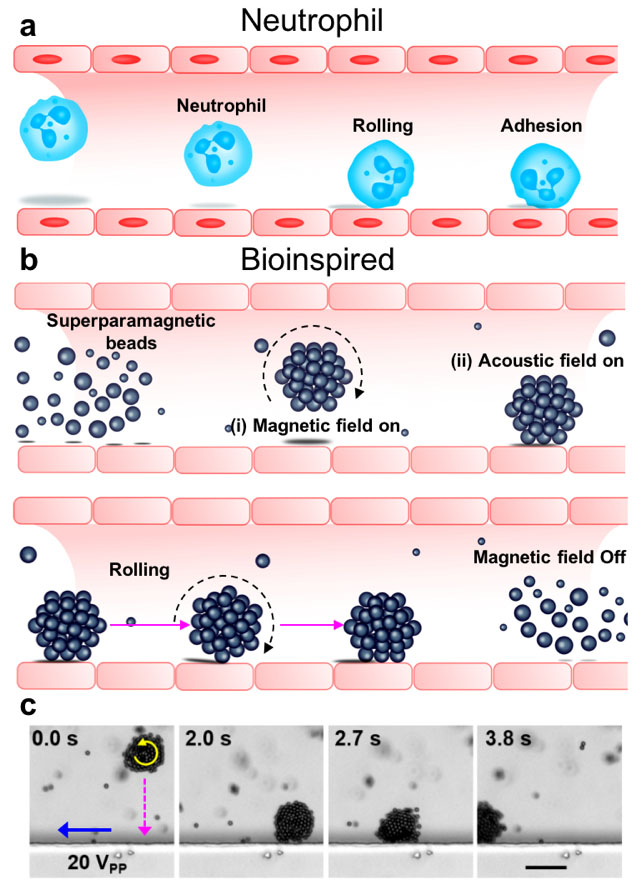Neutrophil-inspired propulsion in combined acoustic and magnetic modalities

We have developed a novel propulsion mechanism inspired by neutrophils rolling on the endovascular wall (Fig. 3a.). Neutrophils undergo tethering, rolling, adhesion and crawling, before transmigrating into the diseased tissue. Our super magnetic particles aggregate into a rolling sphere caused by the dipole–dipole interaction in the presence of a rotating magnetic field. The aggregate then migrates towards the wall of the channel due to the radiation force of an acoustic field. By combining magnetic and acoustic fields, we achieved a rolling-type motion along the boundaries, as shown in Fig. 3b. An important feature of our system is that the contact force, which is critical for rolling, can be tuned, which makes our mechanism suitable for use in channels with arbitrary radii of curvature.
The assembled particles disassociate when the magnetic field is turned off. Fig. 3c shows the counter-clockwise rotation of the aggregates, executing a rolling movement from right to left when they come into contact with the wall.The self-assembly of the superparamagnetic particles and the propulsion mechanism we have developed has many advantages over using existing prefabricated micro/nanorobots, which are limited in their biocompatibility and biodegradability. We use biocompatible magnetic particles that are already in use as contrast agents for magnetic resonance imaging (MRI). In addition, our concept involves a simple method of production using commercially available particles, as opposed to the expensive fabrication techniques necessary in the production of synthesized micro and nanorobots
Contact: Daniel Ahmed
Rererences:
D. Ahmed, T. Baasch, N. Blondel, N. Läubli, J. Dual, and B. J. Nelson, “Neutrophil-inspired propulsion in a combined acoustic and magnetic field,” Nat. Commun., DOI: 10.1038/s41467-017-00845-5, 2017.
